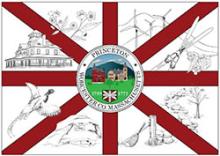Princeton, Massachusetts, Considering Building Own Fiber Network
We recently reached out to Princeton, Massachusetts, after reading several local news articles about the city's ambition to improve broadband in the community. Phyllis Booth of the Landmark has been covering the story. Community leaders recently mailed survey cards to every residence in town and put the survey online to provide ample opportunity for feedback.
With survey results complied, the answer from respondents was an overwhelming, "Yes! We want better Internet!" The Princeton Broadband Committee has since made the results available in a series of visuals that express the community's experiences with speed, customer satisfaction, desirable applications, and other respondent concerns. Detailed survey results are available for review [PDF].
The results come as no surprise to Stan Moss, Board of Selectmen Member who is also on the Broadband Committee. "Everybody has tried everything," says Stan when he describes the survey outcome. The community of 3,300 has access to DSL in about 49% of households and other choices are satellite, dial-up, and wireless. According to Moss, Princeton DSL customers averaged a D+. From the Landmark article:
“Once we invest in the fiber it’s pretty good. It’s not costly to upgrade in the future, it’s reliable once it’s in place,” said [Broadband Committee Member John] Kowaleski. “If the town doesn’t do this, no one will,” he added. The town has contacted Verizon and Charter and “we’re not even on their plan,’’ said Kowaleski. “Princeton has insurmountable challenges. It isn’t profitable for Verizon or any other company to provide the infrastructure to give us the service,” said Kowaleski.
Moss says he receives calls on a regular basis from residents who want to know when the city is going to provide FTTH. Most of those calls come from people who work from home or have school age children.


